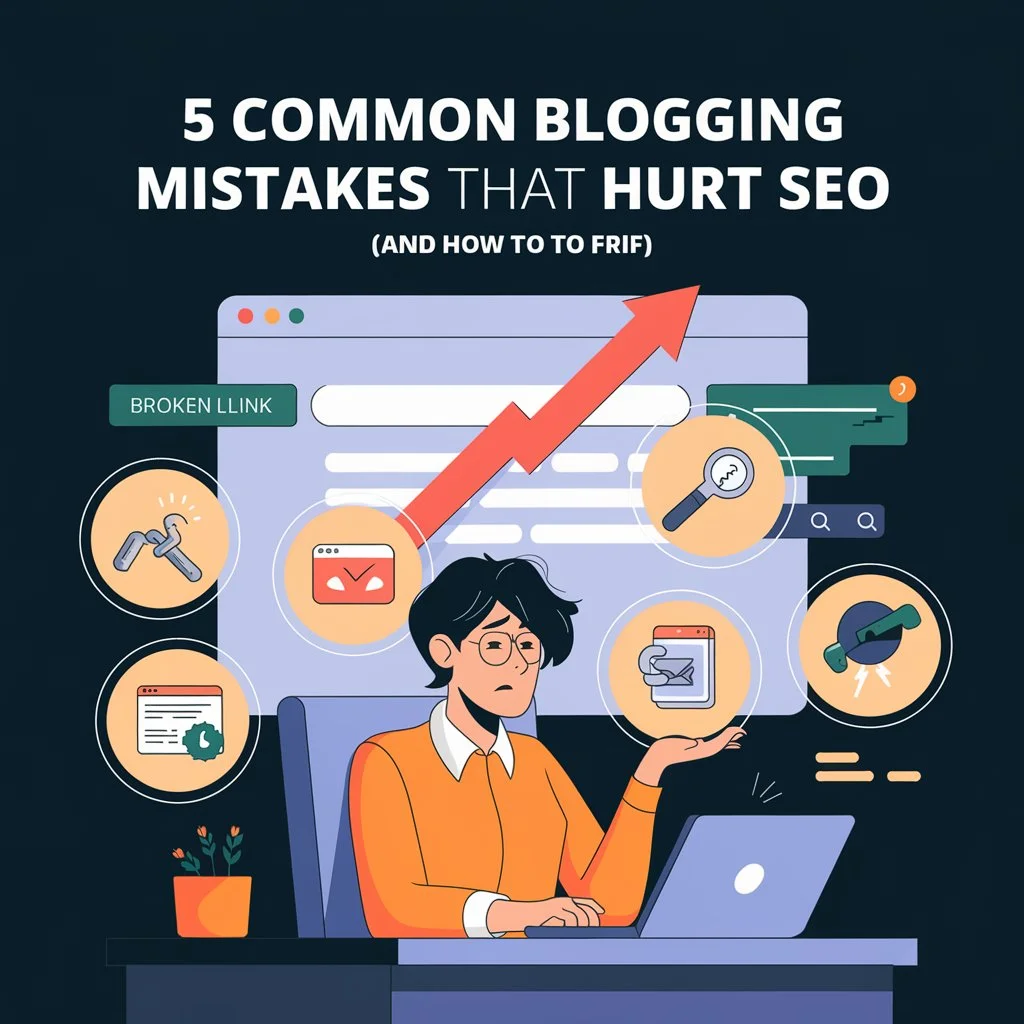In the ever-evolving digital landscape, blogging has emerged as a powerful tool for both personal expression and brand-specific marketing. However, the success of a blog hinges significantly on its visibility, which is primarily dictated by Search Engine Optimization (SEO). Many bloggers, especially those who are new to the field, unknowingly engage in practices that compromise their SEO efforts. In this article, we will delve into five common blogging mistakes that can detrimentally impact your SEO, and, more importantly, we will discuss how you can rectify these pitfalls.
1. Ignoring Keyword Research
The Mistake:
One of the most prevalent mistakes bloggers make is creating content without a focus on specific keywords. This practice makes it challenging for search engines to interpret the central topic of your blog, leading to lower rankings in search results.
The Fix:
To enhance your keyword strategy, utilize reliable tools such as Google Keyword Planner, Ahrefs, or Ubersuggest. These platforms can help you identify relevant keywords that not only have good search volume but also exhibit lower competition. By strategically integrating these keywords into your content, meta descriptions, and headers, you will provide search engines with the necessary cues to recommend your blog effectively.
2. Poor Content Structure
The Mistake:
Another common error is neglecting the structure of your content. Long, unbroken paragraphs, lack of headings, and insufficient formatting can result in a demotivating reading experience for your audience.
The Fix:
Improving content structure is simple yet effective. Apply the following strategies:
- Use Headings: Implement a clear hierarchy with headings (H1, H2, H3) to guide your readers.
- Bullet Points: Break down key points into easily digestible bullet lists to enhance clarity.
- Short Paragraphs: Maintain short paragraphs to ensure better readability and engagement. Aim for 2-4 sentences per paragraph.
By adopting these techniques, your content will be more user-friendly, making it easier for visitors to engage while also improving your SEO rankings.
3. Not Optimizing Images for SEO
The Mistake:
Many bloggers overlook image optimization, uploading large images and failing to include alt text. This oversight can lead to slower loading times and can adversely affect user accessibility, both of which are detrimental to SEO.
The Fix:
Enhancing your images for SEO involves a few straightforward steps:
- Compress Images: Utilize tools like TinyPNG to reduce file size without sacrificing quality.
- Descriptive Alt Text: Always add descriptive alt text to images; this not only assists search engines but also aids visually impaired users.
- Use WebP Format: Consider using the WebP format for your images; it results in faster loading times, further boosting your SEO.
By focusing on image optimization, you enhance both user experience and search engine visibility.
4. Neglecting Internal and External Links
The Mistake:
A common mistake made by many bloggers is failing to incorporate relevant internal and external links. This oversight can diminish the authority of your content, making it less likely to rank well on search engines.
The Fix:
To address this issue, ensure that you:
- Add Internal Links: Link to your previous blog posts that are relevant to the topic at hand. This helps readers discover more of your content and encourages longer site visits.
- Cite High-Authority External Sources: By referencing reliable external websites, you can boost the credibility of your own content. It signals to search engines that your article is well-researched and trustworthy.
Integrating these link-building strategies will significantly enhance your blog’s visibility and authority.
5. Inconsistent Posting Schedule
The Mistake:
Irregular posting patterns can lead to decreased reader engagement and may hamper search engine crawl frequency, both of which negatively impact SEO.
The Fix:
To combat this issue, create a content calendar that outlines your posting schedule. Aim for consistency—whether that means you post weekly, bi-weekly, or monthly, a regular posting schedule keeps your audience engaged and alerts search engines to revisit your site more frequently.
Conclusion
Avoiding these five common blogging mistakes can significantly enhance your blog’s SEO performance, ultimately driving more traffic and increasing reader engagement. By prioritizing keyword research, improving content structure, optimizing images, leveraging internal and external links, and maintaining a consistent posting schedule, you can create a robust foundation for your blog’s success. In the digital world where competition is fierce, every small optimization counts—embrace these practices and watch your blog rise through the search engine ranks.










